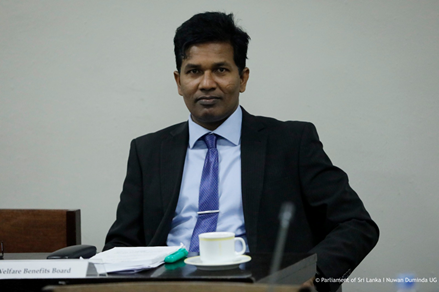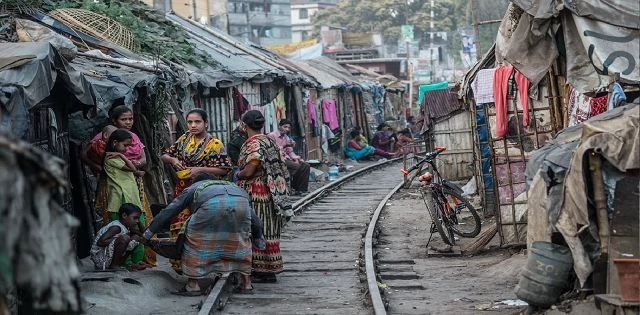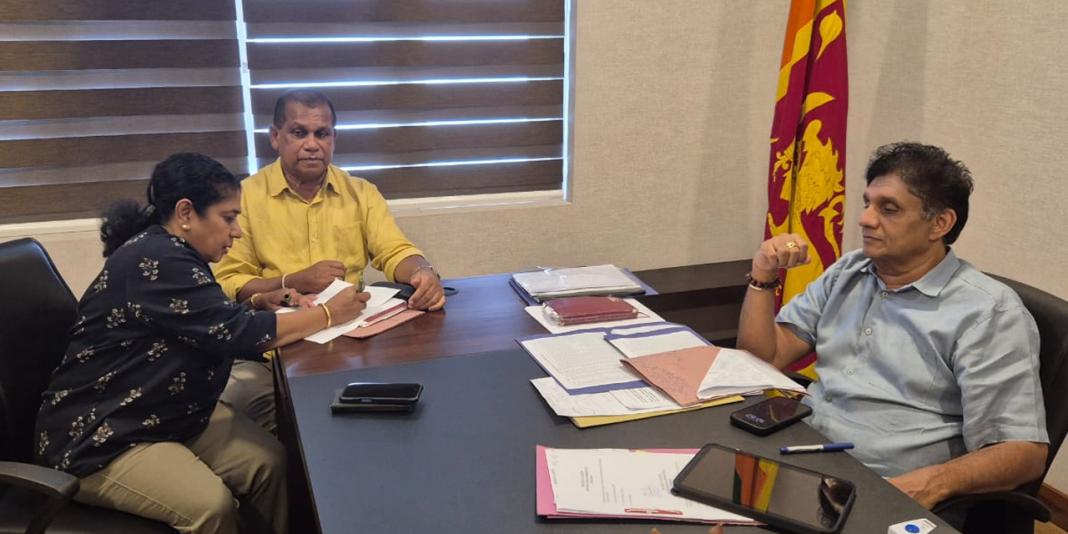By Visvalingam Muralithas
Malawi, one of the poorest nations on earth, is deeply dependent on foreign aid. Its capital, Lilongwe—a planned city constructed in the 1970s with World Bank financing—stands as a physical manifestation of this reliance. The city’s neatly ordered streets are lined with the offices of international charities, development agencies, and various government departments. Tucked away in informal settlements are the homes of domestic workers—cooks, cleaners, and drivers—employed by foreign officials. These settlements often display the flags of the donor nations supporting them, like miniature embassies for aid.
Over the past fifty years, foreign governments and development institutions have established an unofficial division of labor in Malawi. The United Kingdom funds education initiatives, Japan supports energy infrastructure, the European Union invests in agriculture, and Ireland backs a network of legal advocacy groups. Even Malawi’s Ministry of Health operates with significant foreign input—its operations are underwritten by Chinese funding, and its corridors are lined with offices labeled not by the department but by donors. Many doors simply read “USAID,” the acronym for the United States Agency for International Development.
This deeply embedded system was shaken abruptly just over a month ago, when Donald Trump, returning to office, suspended funding to USAID—the primary channel through which the U.S. distributes its foreign aid. The impact was immediate and widespread. Vital programs came to a halt overnight. Though a waiver was later introduced to allow “life-saving” projects to resume, the approval process required the sign-off of local development officers—many of whom were on furlough due to the freeze. As a result, only a small number of projects have managed to restart.
In Malawi, the shutdown has forced the closure of maternal health clinics and refugee support services. Many organizations have no expectation of reopening until Trump’s 90-day suspension expires. Yet not all the suspended initiatives were emergency responses. Many of the halted efforts were aimed at fostering long-term development—designed to make Malawi more economically self-sufficient, not merely to keep people alive.
Trump’s freeze is a stark illustration of a broader shift in the global approach to foreign aid. On February 25th, British Prime Minister Sir Keir Starmer announced a significant reduction in the UK’s aid budget, lowering it from 0.5% to 0.3% of gross national income in order to redirect funds to defense. France, traditionally the second-largest Western donor after the United States, plans to slash its aid contributions by 35% this year. Germany is also contemplating cuts. Public opinion in many donor countries supports these reductions, reflecting a growing weariness with foreign aid spending.
The History of Foreign Aid in Sri Lanka
Sri Lanka, a South Asian island nation, has been one of the prominent recipients of foreign aid over the years. Despite substantial assistance from international donors, Sri Lanka’s development trajectory has faced significant challenges. In this context, Sri Lanka offers valuable lessons regarding the complex relationship between foreign aid and economic prosperity.
Sri Lanka has received foreign aid in various forms, including grants, loans, and technical assistance, from global financial institutions such as the World Bank, the International Monetary Fund (IMF), and bilateral donors like the United States, Japan, the United Kingdom, India, China, etc., . This aid has supported a wide range of initiatives, from infrastructure development to education, healthcare, and disaster relief efforts.
Sri Lanka’s reliance on foreign aid peaked in the early 2000s, as the country was emerging from a prolonged civil war that had severely crippled its economy and infrastructure. Donors were keen to help Sri Lanka recover and rebuild, contributing to a steady flow of assistance aimed at stabilizing the country’s post-conflict recovery. However, despite this support, Sri Lanka’s economic progress has been uneven, and poverty remains widespread, especially in rural areas.
While foreign aid has helped Sri Lanka achieve certain development goals, it has not been the panacea that many had hoped for. The following key lessons can be drawn from Sri Lanka’s experience with foreign aid.
- Aid Dependency and the Lack of Long-Term Solutions
One of the most glaring issues with foreign aid in Sri Lanka is its creation of dependency. Despite billions of dollars in aid, Sri Lanka has continued to rely on external support for much of its development. This dependency has been particularly noticeable in the country’s agricultural sector, where small-scale farmers struggle to compete with subsidized imports. Aid-funded projects have often addressed immediate needs but have failed to establish the internal structures necessary for long-term economic growth.
Sri Lanka’s experience has shown that while aid can provide temporary relief, it is not a substitute for long-term economic planning and self-sufficiency. As aid flows have decreased or become more conditional, Sri Lanka has faced mounting challenges to maintain the gains made in education, health, and infrastructure development.
2. Political Instability and Corruption
A significant portion of Sri Lanka’s foreign aid has been diverted due to corruption and poor governance. The misuse of aid funds has been an ongoing issue, with political elites often channeling resources toward projects that benefit their interests rather than addressing the country’s developmental needs. The lack of transparency in the management of aid has meant that many aid-funded projects have not yielded the desired results.
For example, large infrastructure projects funded by foreign aid, such as highways and airports, have been subject to political interference and mismanagement, and there are no effective monitoring and evaluation systems in place. These projects, while well-intentioned, often end up benefiting private contractors and foreign companies rather than creating lasting benefits for local communities. Furthermore, when foreign contractors handle the construction, and materials, equipment, and tools are imported from donor countries or other foreign nations, the foreign currency spent does not circulate within Sri Lanka but is sent abroad. As a result, while the economy may experience some increase in foreign reserves, the overall positive impact on the local economy remains limited.
3. The Debt Trap
Sri Lanka’s heavy borrowing from international lenders and foreign governments to fund development projects has led to a growing debt crisis. Much of the aid came as loans with interest, pushing the country’s debt-to-GDP ratio higher. As repayment pressures mounted, Sri Lanka faced defaults, austerity measures, and reduced public spending, weakening economic growth and leaving the country vulnerable to external shocks.
4. Unintended Consequences
Foreign aid can also distort local markets, particularly when it comes to food aid or subsidies. In the case of Sri Lanka, large quantities of imported food aid have undermined local agricultural production, making Sri Lanka less self-reliant and more dependent on foreign food supplies. Local farmers often struggle to compete with subsidized goods brought in by international donors, and this hampers the growth of the domestic agricultural sector.
Furthermore, aid-funded projects, particularly in the area of infrastructure, have not always been aligned with local needs. For instance, large-scale infrastructure projects like highways or airports have often been funded by aid without proper consideration of their long-term economic impact on local communities. These projects tend to benefit multinational corporations and foreign contractors, rather than creating local employment or addressing critical infrastructure deficits that would have a lasting impact on economic growth.
5. Missed Opportunities for Building Human Capital
Another significant issue with foreign aid in Sri Lanka has been the lack of focus on building human capital. Despite receiving substantial aid for education and healthcare, the country has not invested enough in developing the skills and expertise required to drive innovation and entrepreneurship. For example, foreign-funded education programs have often emphasized formal schooling without addressing the need for vocational training or entrepreneurial skills.
As a result, Sri Lanka has struggled to create an environment conducive to economic diversification and job creation. The country’s reliance on foreign aid has detracted from efforts to build a strong domestic workforce capable of supporting the country’s long-term economic growth. Instead of focusing on creating a culture of self-reliance, the aid model has perpetuated the need for ongoing external assistance.
The Changing Landscape of Foreign Aid
In recent years, Sri Lanka has begun to reassess its relationship with foreign aid. The country has made efforts to diversify its sources of funding, moving away from traditional aid toward foreign direct investment (FDI) and trade agreements. Sri Lanka has also sought to tap into its own resources to drive development, including through the promotion of domestic industries and entrepreneurship.
Despite these efforts, Sri Lanka remains heavily dependent on external financial support. The country’s fiscal deficits and rising debt levels continue to constrain its ability to invest in key sectors like education, healthcare, and infrastructure without relying on foreign aid.
Moving Beyond Foreign Aid
The lessons from Sri Lanka highlight the need for a new approach to development—one that focuses on self-sufficiency, institutional capacity building, and sustainable economic growth. While foreign aid can play a role in addressing immediate humanitarian needs and providing support during crises, it should not be seen as the primary engine of long-term economic development.
To move beyond aid dependency, Sri Lanka needs to prioritize the following:
- Strengthening Governance and Accountability: The government must improve its ability to manage resources effectively and reduce corruption. Transparent and accountable governance is essential to ensure that aid and other external financial resources are used to support long-term development goals.
- Diversifying the Economy: Sri Lanka should focus on diversifying its economy to reduce reliance on traditional sectors like tea, textiles, and tourism. Investing in technology, innovation, and new industries can help drive sustainable growth.
- Investing in Human Capital: By prioritizing education, vocational training, and entrepreneurship, Sri Lanka can develop a skilled workforce capable of supporting diverse industries and creating self-sustaining economic growth.
- Building Stronger Domestic Institutions: Strengthening domestic institutions, from local governments to the private sector, will ensure that Sri Lanka can create an environment conducive to investment and growth.
- Fostering Regional Cooperation: Engaging with neighboring countries and leveraging regional trade agreements can provide new opportunities for Sri Lanka to expand its markets and build a more resilient economy.
Conclusion
Sri Lanka’s experience with foreign aid offers valuable lessons for other developing nations. While aid can provide short-term relief, it has not been a cure-all for the country’s development challenges. By focusing on sustainable economic growth, reducing dependency on external resources, and strengthening local institutions, Sri Lanka can chart a more prosperous and self-reliant future. The key lies in striking a balance between external assistance and internal capacity building, ensuring that foreign aid serves as a tool, not a crutch, for long-term development.
Source: The Economist
Writer

Visvalingam Muralithas is a researcher in the legislative sector, specializing in policy analysis and economic research. He is currently pursuing a PhD in Economics at the University of Colombo, with a research focus on governance, development, and sustainable growth.
He holds a Bachelor of Arts in Economics (Honours) from the University of Jaffna and a Master’s degree in Economics from the University of Colombo. His academic background is further strengthened by postgraduate diplomas in Education from the Open University of Sri Lanka and in Monitoring and Evaluation from the University of Sri Jayewardenepura.
In addition to his research work, Muralithas has contributed to academia by teaching economics at the University of Colombo and the Institute of Bankers of Sri Lanka (IBSL) and has also gained industry experience as an investment advisor at a stock brokerage firm affiliated with the Colombo Stock Exchange.
📧 Email: [email protected]
📞 Phone: +94 778135971





